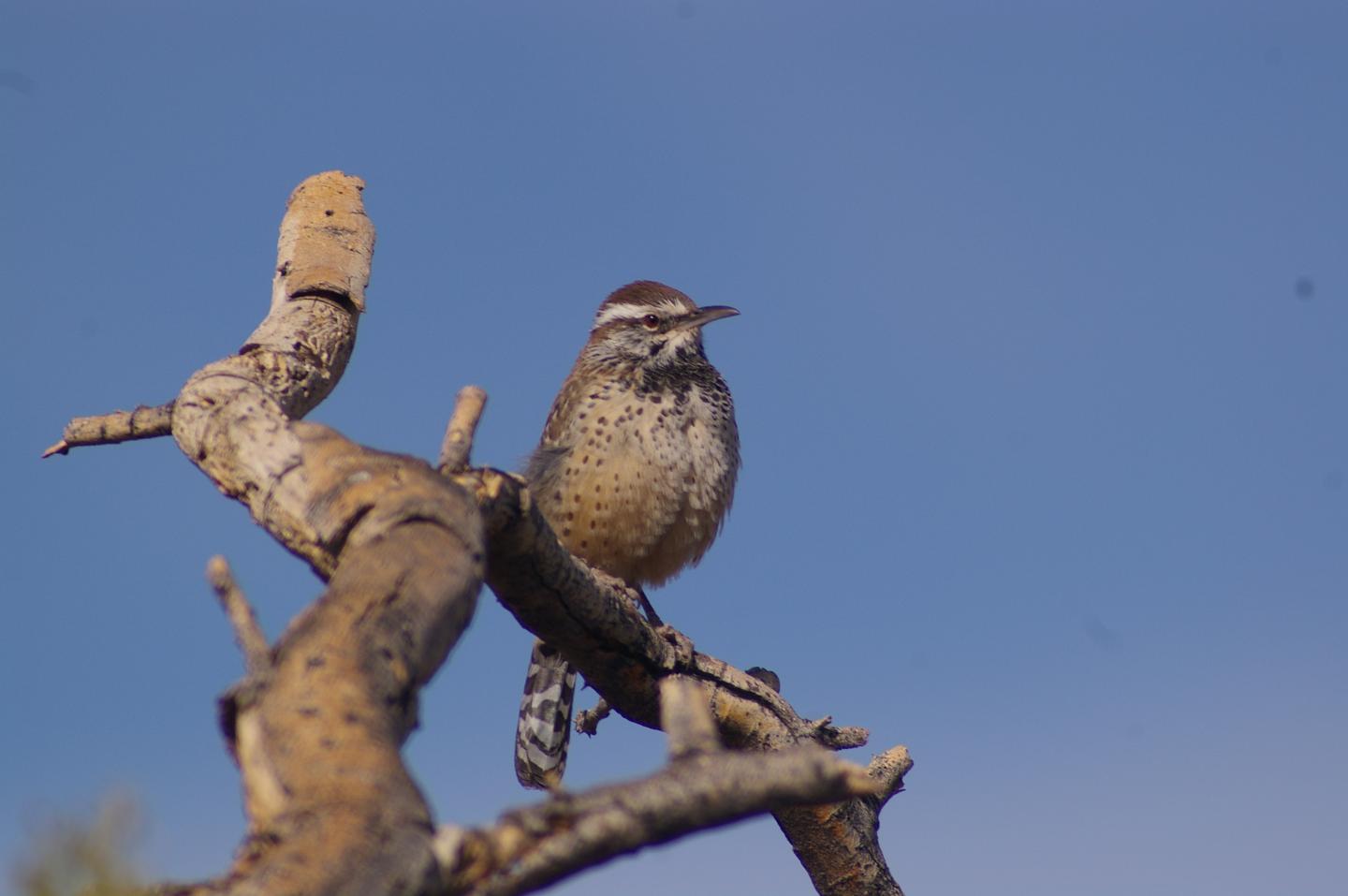UMass Amherst, Forest Service and Arizona State ecologists investigate bird diversity

Credit: Eyal Shochat/Ben Gurion University of the Negev
AMHERST, Mass. – A persistent question among urban ecology researchers has been the long-term impact of urbanization on bird species biodiversity. Specifically, they wonder whether the portions of cities with higher diversity are simply exhibiting an “extinction debt” – populations doomed to extinction but not yet disappeared – or if other factors such as range shifts or local environmental changes play a role in changes in diversity.
Now, researchers led by co-first authors Paige S. Warren at UMass Amherst and Susannah B. Lerman of the USDA Forest Service, with Riley Andrade, Kelli Larson and Heather Bateman of Arizona State University, report on results from their long-term monitoring of birds in the Phoenix metropolitan area. Details appear in the current online issue of Ecosphere.
The study looked at bird communities over time in relation to habitat, societal factors, human responses and bird populations. Findings suggest that although the presence of bird species, bird abundance and the number of bird species all decreased over time, in areas where homeowners provided desert landscaping – fine gravel and drought-tolerant, desert-adapted vegetation – some desert specialist birds such as verdin and cactus wren could still be found.
The researchers also report observing socio-economic factors associated with species diversity. For example, the desert-like landscaping types and desert specialist bird species occurred more frequently in neighborhoods with higher per-capita incomes and lower percentages of renters and Hispanic/Latinx residents. Warren notes that including socioeconomic factors has become more common recently, but it’s still unusual. Their earlier work “was truly ground-breaking with respect to including socioeconomic factors,” she says.
“The fact that all kinds of species were declining is particularly surprising and troubling to us,” says Lerman. However, Warren adds, “Our results suggest that if we could find ways to encourage homeowners to provide more areas with desert-like plantings, there are opportunities to retain the richness of bird species, even in people’s back yards.”
Doug Levey, an NSF Long-Term Ecological Research (LTER) program director, says, “It’s surprising and worrisome that birds are declining in neighborhoods that appear otherwise unchanged. Something is going on and these scientists are well on the way to figuring it out.”
As noted, this study built upon an earlier investigation in the same area by Warren and Lerman, who found positive associations between certain bird species and landscaping arrangements such that desert birds were found associated with desert-like landscaping. They also found greater resident satisfaction in neighborhoods with greater bird diversity, and neighborhoods with wealthier residents had more localized bird species.
Five years after the first study, the researchers revisited the same sites to evaluate changes in bird species composition in the context of bird population trends, plus local environmental changes in habitat and land use, to see what species persisted over time, whether desert birds continue to associate with desert-like landscapes, whether socio-economic inequalities in access to bird diversity persist and whether these affect resident satisfaction with bird variety.
Warren, Lerman and colleagues conducted the investigation in the National Science Foundation’s (NSF) Central Arizona-Phoenix (CAP) LTER site in the same 39 neighborhoods sampled five years earlier. They and colleagues surveyed birds twice per year, characterized landscape type and administered a household survey to gauge neighborhood satisfaction with local birds. They used census data to characterize neighborhood socio-economic features and local maps to identify land use changes. Dan Childers, CAP LTER director, says, “This excellent paper demonstrates that inter-disciplinary socio-ecological analysis of long-term data is critical to helping us better understand urban ecosystem dynamics.”
The authors report that average bird occupancy – the proportion of places where a species is found – decreased between the two periods by 9 percent, from 46.7 to 37.8 percent, and note that six of 11 desert specialist species declined. Also, there were fewer desert bird species recorded during the second time period. However, half of the generalist bird species and half of the invader species remained stable.
Landscape types showed little change; in particular the number of desert-like landscapes was the same between periods, they note. Census data showed a shift toward more Hispanic/Latinx residents and fewer Anglo residents, while income and education levels did not change. Similarly, associations between desert birds in higher income neighborhoods and more exotic species found in Hispanic/Latinx neighborhoods remained consistent through the two sampling periods, even though the types of birds shifted over time.
Overall, the authors report, “the decline in bird species/change in composition is driven by factors other than changing demographics or landscapes.” They add, “We documented significant losses in species richness and abundance, particularly for desert specialist species across a five-year period. However, some of the obvious mechanisms of regional population trends or local-scale environmental change do not appear to account for these losses, raising the possibility of an extinction debt.”
Warren says, “The declines we found here mirror similar declines found over a 12-year period in riparian habitats in Phoenix, suggesting this is not just a five-year dip.” Lerman adds that a loss of species in residential yards could significantly affect residents’ access to a vibrant and unique desert fauna, and she hopes that this information “will inspire residents and local gardening organizations to landscape with birds in mind.”
Childers points out, “Cities are designed, built and managed as human habitat, and these findings demonstrate how our decisions about that affect other species that share our urban ecosystems with us. These ‘lessons learned’ also provide valuable input as we work with urban practitioners to help move our cities towards more sustainable futures.”
###
This work was supported by the NSF and its Central Arizona-Phoenix LTER.
Media Contact
Janet Lathrop
[email protected]
Original Source
https:/
Related Journal Article
http://dx.




